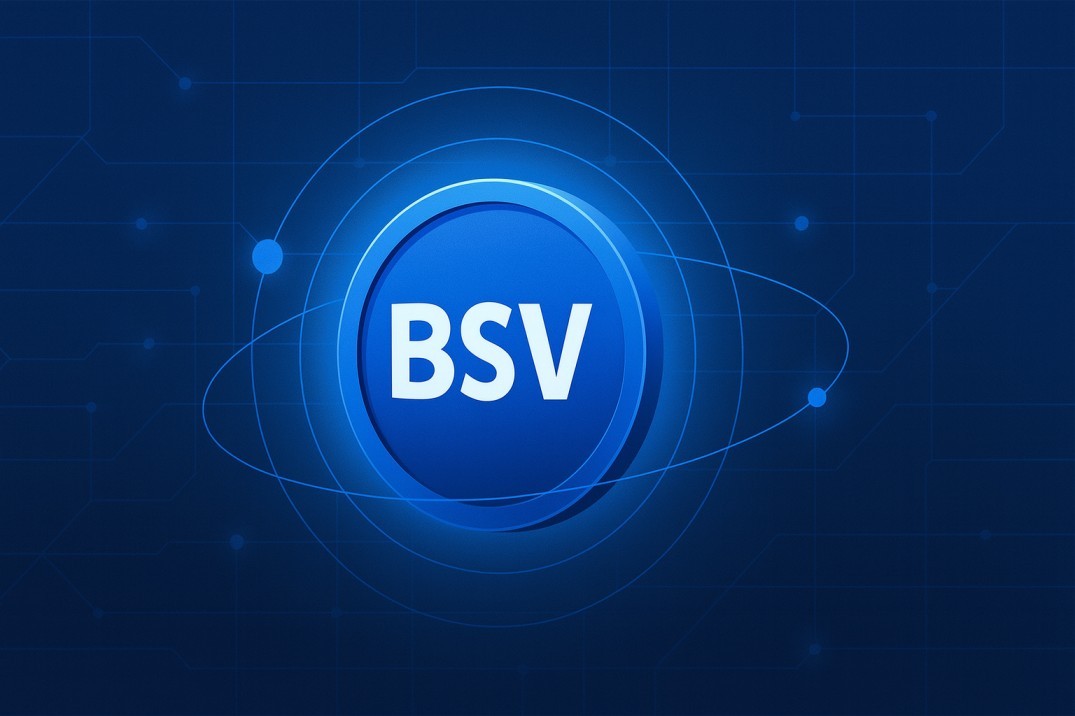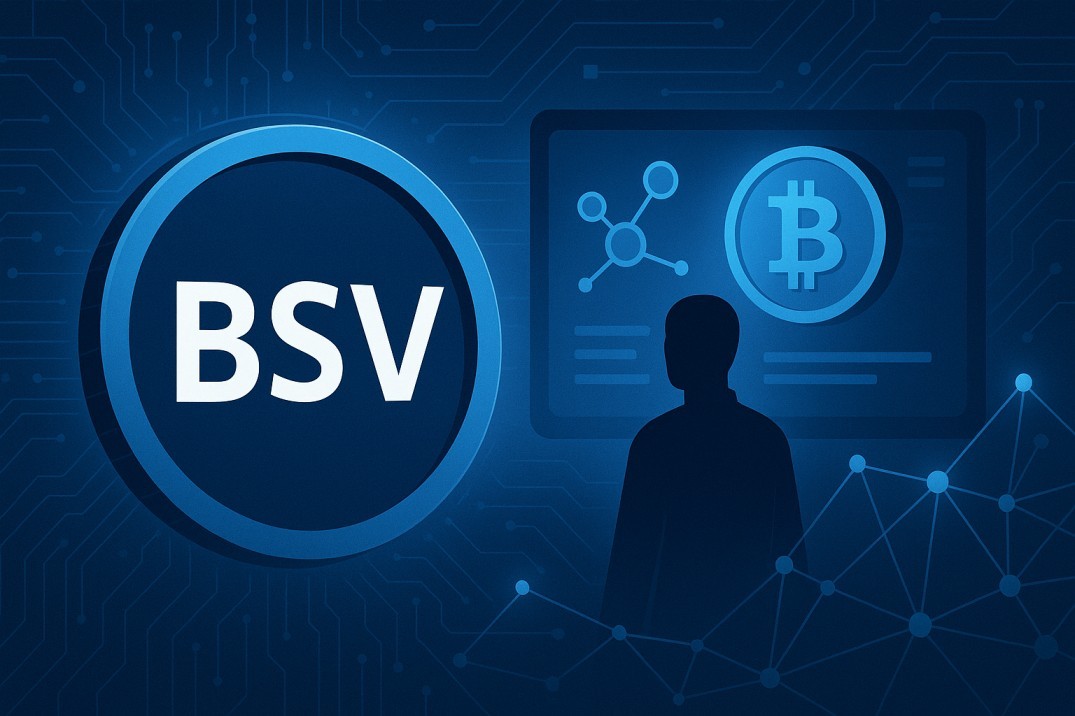TL;DR
- Bitcoin SV (BSV): A hard fork of Bitcoin Cash (2018), aiming to restore Satoshi Nakamoto's original Bitcoin protocol.
- Core Vision: Unlimited block size, low fees, enterprise-level scalability, and adherence to the Bitcoin white paper.
- Performance: Claimed capacity of up to 1,000,000 TPS, with fees as low as $0.0000005 per transaction.
- Unique Features: Re-enabled opcodes, data transactions, smart contracts, and tokenization - all on-chain.
- Founders & Advocates: nChain, Craig Wright, Calvin Ayre, and the BSV Association.
- Tokenomics: 21 million max supply, PoW mining, halving cycles, focus on transaction fee-driven economy.
- Use Cases: Micropayments, enterprise data, tokenization, digital identity, smart contracts.
- Challenges: Controversial leadership, limited exchange support, adoption lag, centralization risks.
- Future Outlook: Aims to be a global data ledger with enterprise applications, but adoption will decide its longevity.
Bitcoin SV (BSV) is one of the most debated and unique branches of the Bitcoin family tree. Emerging from the 2018 split of Bitcoin Cash (BCH), which itself had forked from Bitcoin (BTC) a year earlier, BSV's mission has been clear: to restore what it calls the "original Bitcoin protocol" as envisioned by Satoshi Nakamoto.
The BSV blockchain positions itself as a public, scalable, and low-cost network that can serve not only as a peer-to-peer electronic cash system but also as a distributed data ledger capable of powering enterprise-grade applications. Unlike other blockchain projects that focus heavily on second-layer solutions, BSV emphasizes unbounded on-chain scaling, with the belief that bigger blocks and low fees are the key to achieving mass adoption.
As the BSV Association describes it, the blockchain is designed for scalability, security, stability, and low fees - four pillars that aim to make BSV a foundation for digital cash, enterprise applications, and global data infrastructure (BSV Association).
The Origins of Bitcoin SV

The story of Bitcoin SV cannot be told without retracing the "blocksize wars." Bitcoin's early community was split over whether to keep block sizes small for decentralization or to expand them for greater transaction throughput. In 2017, this ideological clash led to the creation of Bitcoin Cash (BCH), which opted for larger blocks than BTC.
A year later, disagreements within the BCH community over further protocol changes resulted in yet another split, giving rise to Bitcoin SV (short for "Satoshi Vision"). BSV advocates argue that Bitcoin's original design had been altered too much by BTC and BCH developers, and that restoring key functions - such as unbounded block sizes and re-enabled opcodes - was critical to realizing Satoshi Nakamoto's intent.
Founders and Key Figures
Bitcoin SV was spearheaded by several influential but controversial figures in the blockchain industry:
- nChain: A blockchain research and development company that built and maintains the BSV node software. nChain continues to deliver infrastructure updates to keep BSV in line with its scaling mission.
- Craig Wright: Former Chief Scientist at nChain, who claims to be Satoshi Nakamoto. While his claim remains heavily disputed, he has been a vocal advocate for BSV since its inception.
- Calvin Ayre: Entrepreneur and founder of Ayre Group, who has financially supported BSV development and startups building on the chain.
- BSV Association: A Switzerland-based non-profit industry group formed after the split to coordinate adoption, infrastructure, and global outreach.
Together, these entities and individuals continue to shape the narrative and technical direction of Bitcoin SV.
What Makes Bitcoin SV Unique?

1. Unbounded On-Chain Scaling
While BTC remains capped at a 1MB block size and relies on layer-2 solutions like the Lightning Network, BSV has eliminated artificial limits. In 2021, the network mined gigabyte-level blocks (2GB), demonstrating a scale thousands of times larger than BTC's.
BSV's developers claim the blockchain can theoretically handle up to 1,000,000 transactions per second, rivaling - and potentially surpassing - the throughput of global payment giants like Visa (BSV Blockchain).
2. Low Fees
The average cost per transaction on BSV is a fraction of a cent - as low as $0.0000005 per transaction - making it ideal for micropayments and data transactions at scale.
3. Data Capabilities
Unlike BTC's focus on money transfers, BSV's design enables smart contracts, tokens, and computation directly on-chain. By re-enabling previously disabled Script functions, BSV opens the door to enterprise-level blockchain applications such as supply chain tracking, healthcare data, digital identity, and gaming.
4. Philosophical Alignment with Satoshi's Vision
BSV claims to be the only blockchain that fully adheres to the original Bitcoin white paper, early Bitcoin client code, and Satoshi Nakamoto's writings.
How Bitcoin SV Works
Proof-of-Work Security
Just like Bitcoin, BSV uses the Proof-of-Work (PoW) consensus mechanism. Miners compete to solve complex puzzles, validate transactions, and earn block rewards. This system not only secures the network but also ensures immutability once blocks are added to the chain.
Transaction Processing
With no block size limit, BSV processes transactions at massive scale. This makes it suitable not just for peer-to-peer payments, but for data transactions, token issuance, and even smart contract execution - all directly on the main chain.
Economic Incentives
Miners are incentivized through block rewards and transaction fees. As block rewards halve over time (every 210,000 blocks), the long-term vision is that miners will rely on transaction fees sustained by high transaction volumes.
Tokenomics & Adoption of Bitcoin SV (BSV)
- Maximum Supply: 21 million BSV (same as Bitcoin).
- Circulating Supply: Around 19 million (as of 2025).
- Block Rewards: Distributed to miners, halving approximately every four years.
- Utility: BSV is used for transaction fees, network security incentives, and as a digital asset for payments.
- The economics of BSV mirror Bitcoin but diverge in philosophy: instead of scarcity-driven adoption (BTC's store-of-value narrative), BSV relies on scalability and utility-driven demand.
Adoption and Real-World Use Cases
BSV envisions itself as more than money. Some of the emerging and proposed use cases include:
- Micropayments: Enabling near-zero-cost payments for streaming, gaming, and IoT transactions.
- Enterprise Data Solutions: On-chain document storage, supply chain data, and identity verification.
- Tokenization: Assets, stablecoins, and NFTs built directly on BSV.
- Smart Contracts: Complex business logic powered by its restored Script capabilities.
- Government and Enterprise Systems: Some pilots have explored BSV for public records and digital infrastructure.
Challenges and Risks
Despite its technical ambition, BSV faces significant hurdles:
- Controversy Around Leadership: Craig Wright's ongoing legal battles and disputed claims to be Satoshi Nakamoto have polarized the crypto community. This controversy often overshadows BSV's technical merits.
- Limited Exchange Support: Major exchanges like Coinbase and Binance have delisted or never listed BSV, reducing liquidity and accessibility for global investors.
- Adoption Gap: While BSV markets itself as enterprise-ready, real-world adoption has lagged behind networks like Ethereum, Solana, or even Bitcoin's Lightning Network.
- Security Concerns: Large block sizes raise questions about centralization - only powerful miners can process multi-gigabyte blocks, potentially limiting network participation.
- Market Perception: Many in the broader crypto ecosystem view BSV as niche or controversial, impacting developer interest and ecosystem growth.
The Future of Bitcoin SV
Looking ahead, BSV's roadmap focuses on further scaling and proving its million transactions per second (TPS) benchmark on the mainnet. The BSV Infrastructure Team continues to test improvements in node performance to accommodate enterprise-level applications.
If successful, BSV could position itself as not just "digital cash" but as a global data ledger supporting entire industries. However, its ability to attract developers, enterprises, and users at scale will determine whether this vision translates into lasting adoption.
Final Thoughts
Bitcoin SV occupies a unique place in blockchain history - both as a technical experiment and as a philosophical movement to restore Satoshi's vision. Its unbounded block sizes, ultra-low fees, and data capabilities set it apart from BTC and BCH. Yet, controversies, limited exchange access, and slower adoption pose challenges to its long-term viability.
For believers, BSV represents the "real Bitcoin" that scales to global needs. For skeptics, it's a divisive fork struggling to find relevance. Regardless, BSV remains an important case study in how blockchain communities interpret - and fight over - the meaning of Satoshi Nakamoto's white paper.







